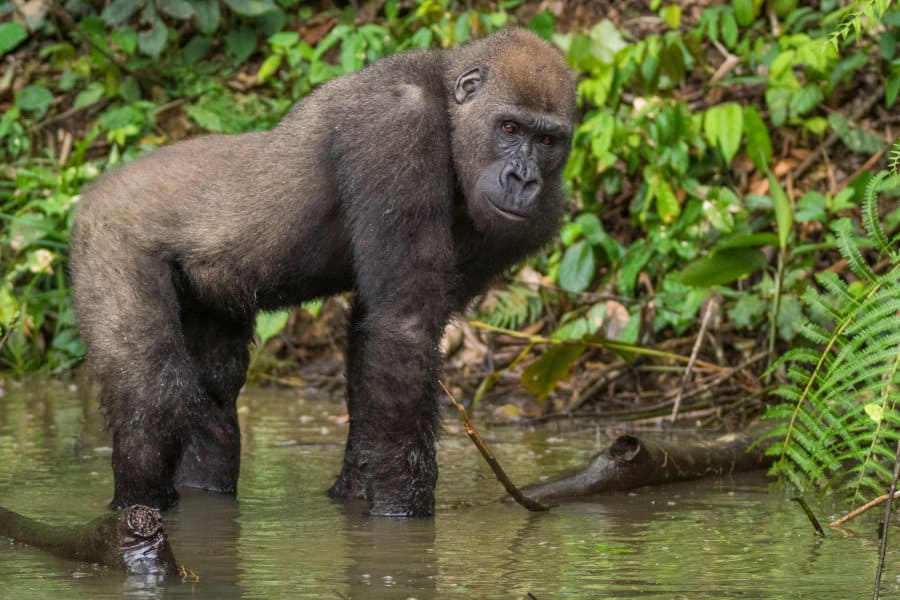Mountain Gorilla Trekking Briefing
Here’s a recap of some of the important things that were mentioned in the video:
- Part of the money you pay for the gorilla permit goes back to the local communities around the area. For instance, it is used to build schools, for community health centres, and also to support a local pygmy project.
- The Nkuringo office you see in the footage is part of Bwindi impenetrable National Park. The Bwindi Impenetrable Forest covers 331 square kilometers.
- 400 mountain gorillas (half of the world’s population) live in those mountains. The rest of the gorilla population inhabits Mgahinga Gorilla National Park (also in Uganda), Volcanoes National Park (north-west Rwanda), and Virunga National Park (in the Democratic Republic of Congo).
- The Nkuringo family I had the privilege of seeing comprises 19 members.
- In each gorilla group there is one dominant male, called the silverback.
- Silverbacks get their names from the silver patch of hair on their back, which starts to become apparent once they reach full maturity at around 12 years old (in the video Herbert mentions this happens at around 14-15 years of age).
- There are 30 gorilla families in the Bwindi park: while 13 families have become accustomed to people, the other groups have not.
- One way to estimate the population of a gorilla group is by counting their nests (where they sleep at night).
- Very important: You can’t be sick when you go to see the gorillas. Mountain gorillas are very vulnerable to diseases (such as flu for instance), and can easily contract them from human beings.
- Gorillas are our cousins: we have over 98,4% of genes in common.
- Herbert, our guide, typically works with a team of 5 people. Two usually leave early in the day to track the gorillas. Gorillas sometimes move long distances so by tracking them it gives us a better chance to find them. Team members communicate with a radio to let us know where the mountain gorillas are. Thanks to the trackers valuable insights, it also enables the guides to take precious shortcuts through the bush.
- Two out of five rangers carry the guns. Their role is to protect tourists from potential danger.
- The major threats in Bwindi include forest elephants, which are highly unpredictable, as well as gorillas that aren’t used to people and are therefore best left alone.
- If a gorilla charges, the ranger uses his rifle and shoots in the air to scare the animal away (mountain gorillas fear the sound of gun shots).
- Porters can be used to help out carry your bags. It costs $15 US per porter.
- Walking sticks are used in the jungle to give you balance and support.
- Gorilla rules: If you break the rules, get ready to wrestle with the silverback (not recommended)!
Some of these rules include:
1. No flash photography.
2. Don’t look at them in the eyes (if you do, gorillas see it as a challenge).
At the end of the day, it’s an unfair battle. Some of the big males can weigh over 200 kg and are extremely powerful.
—
I traveled with Acacia Africa on this African safari expedition. For more information on this amazing trip, consult the 58-day Ultimate African Overlander.




Gorilla briefing is one of the important times you should not miss because you do not know what is in the jungle. Thanks Michael.
My pleasure Stean, glad you enjoyed the video! 😉